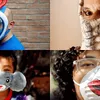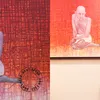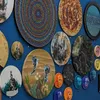Art in transition: The Kiran Nadar Museum of Art holds Mask-a-thon competition amid lockdown
Based out of New Delhi, KNMA is keeping art lovers engaged with artwork, and a Mask-a-thon competition during the lockdown.
The Kiran Nadar Museum of art started by art visionary and collector Kiran Nadar, is the first private museum of art exhibiting contemporary and modern pieces of work.
Located in the heart of historical New Delhi, the non-profit organisation has been making citizens in society culturally aware and appreciative of the vast number of art forms and mediums the world has to offer.
Over the last decade, KNMA has always aimed to inspire young artists to soar to their full potential. The museum honours and preserves the art heritage of the country, while constantly acknowledging and providing a platform for fresh artistic talent.
The museum holds over 5000+ works of art and has had more than 100 International exhibitions and art exchange programmes since its inception and has collaborated with other museums globally such as ‘The Metropolitan Museum of Art, New York’ Musee Des Arts Asiatiques, Nice, and Tate Modern in London to name a few.
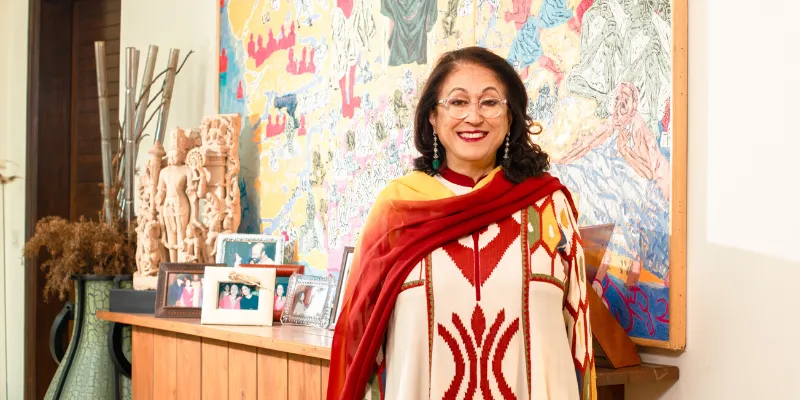
Founder and Chairperson of KNMA, Kiran Nadar.
After news hit of the coronavirus pandemic, the museum despite shutting its doors has moved to virtual, online engagement to keep the artist in everyone alive.
KNMA has been offering online programmes for adults and children, during the lockdown, and has been providing downloadable colouring worksheets of noteworthy and famous artworks by renowned artists for kids, virtual tours of exhibitions as well as online instructional videos with easy do-at-home art projects.
Most recently, they have been carrying out a virtual ‘Mask-a-thon’ competition to encourage children to use their creativity and come up with unique designs, using the PPE mask as a canvas. The winning works will be printed and presented to the world.
“Our idea is to shine a light on the noble task of volunteering. The focus is to bring out the liberating spirit of creativity, which is our preoccupation, and to honour the heroic efforts of our public health professionals,” says Kiran Nadar.
In an exclusive interview with YS Weekender, Kiran Nadar, Founder and Chairperson of Kiran Nadar Museum of Art (KNMA), talks about the future of the art market amidst lockdown, the online programmes being offered, and artists who have inspired her through the years.
YSW: How do you feel the COVID-19 pandemic is affecting artists and creative practitioners currently?
KN: The world is currently battling the coronavirus pandemic and adapting to an inescapable lockdown. The global economy is hit badly and many industries across are suffering the brunt of it. The art world, however, has adapted fairly quickly and has taken to the virtual world with gusto.
For example, social media accounts have sprung up dealing exclusively with Covid -19 related art, homemade recreations of famous artworks, which are amusing and trending on social media.
While the initial few weeks of lockdown had everyone wondering what had happened, now, many artists, as well as non-artists, are trying their best to be creative, share their narratives and connect with communities amid lockdown and social distancing restrictions.
For traditional artists, this time has given them the unique chance to introspect and experiment with new ideas, while creating new pieces of art.
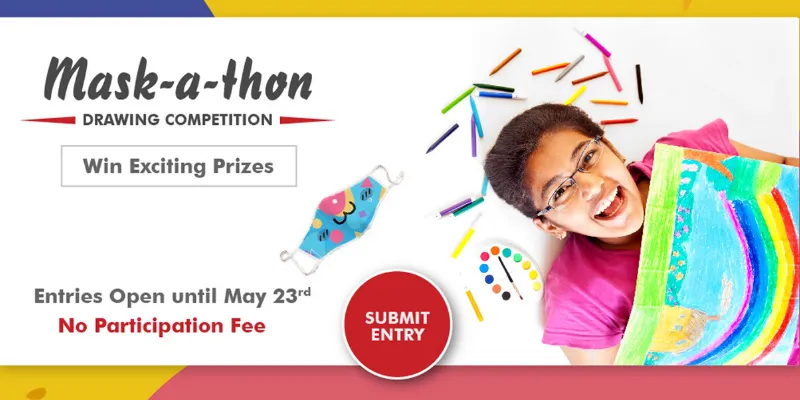
KNMA recently carried out a unique mask-a-thon competition.
YSW: KNMA has started and put together a full online programme for children and adults to help keep them busy during the Covid-19 lockdown. How has it helped keep citizens occupied, and what was the response to this initiative?
KN: In a time like this, we have focused our energy on using art to help bring people a sense of calm, peace and focus amidst the uncertainty and stress of these difficult times.
Our online programmes offer many options for both children and adults. It includes downloadable colouring worksheets of noteworthy and famous artworks, mini virtual tours of some of our exhibitions and artworks, DIY instructional videos with easy home art projects, talks with notable art personalities such as Dayanita Singh/Gayatri Sinha etc, panel discussions and virtual art exhibitions which will be coming soon.
This is new territory for everyone and we are working hard during this unprecedented time to remain dynamic and innovative.
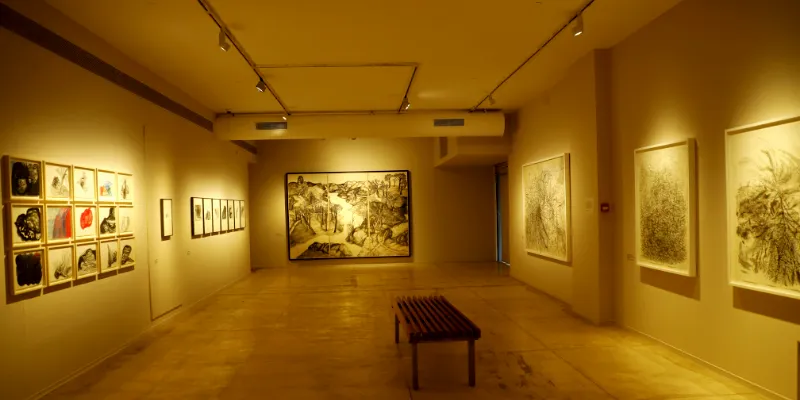
Installations at the Kiran Nadar Museum of Art in New Delhi.
YSW: When did you found KNMA and what was the main vision/goal behind it.
KN: Kiran Nadar Museum of Art (KNMA) opened its doors to the public in January 2010, as the first private museum of art, exhibiting modern and contemporary works from India and the sub-continent.
The idea of opening a private art museum occurred to me when I decided to share my art collection with the larger public. I was acutely aware of the existing dearth of institutional spaces that could bring visibility to modern and contemporary art in India and the subcontinent.
It has been a rewarding and exciting journey for KNMA, as we completed a decade of operations in January 2020.
YSW: Who are some of your personal favourite artists?
KN: Ravi Varma, Souza, Hussain, Arpita Singh and Mrinalini Mukherjee are just some of my many favourites. I collected Mrinalini Mukherjee’s works when nobody was looking at her, and I was one of the earliest collectors to start to recognise and collect her artwork. I wasn’t even a real collector at the time.
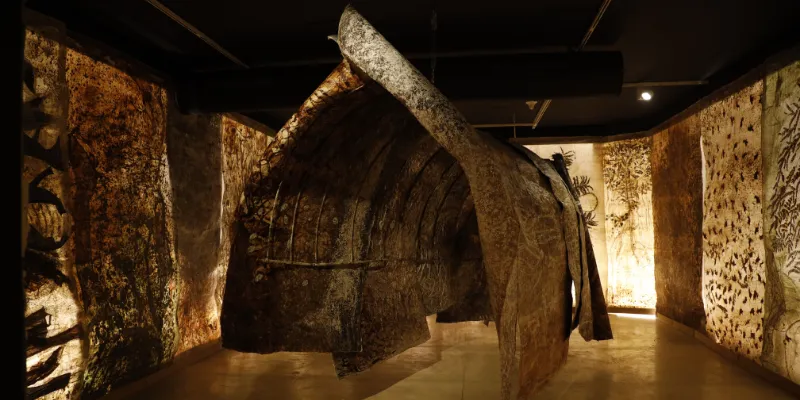
Artist Jayashree Chakravarty's Installation at KNMA.
YSW: Since KNMA is a private museum exhibiting modern and contemporary works, what are some of the most promising and notable art works that you have displayed?
KN: There are lots of wonderful artists and artworks that come to mind! In the past, we had a lot of retrospectives of some of the great promising artists like Nasreen Mohamedi, Vivan Sundaram, Himmat Shah, Arpita Singh, Rameshwar Broota, as well as a show called Seven Contemporaries which featured seven women artists including Anita Dube, Bharti Kher, Dayanita Singh, Ranjani Shettar, Sheba Chhachhi, Sheela Gowda and Sonia Khurana. All were absolutely notable and significant in their own way.
YSW: Who are some of the artists you have collaborated with in the Indian sub-continent and internationally?
KN: We have collaborated with many artists, often taking the Indian artist's work to be exhibited on an international platform.
For example, we have exhibited Himmat Shah's works in a few different venues like JKK, Jaipur, Bihar Museum and Patna. Then, there is Nasreen Mohamedi at The MET Breuer, New York and Reina Sofia, Madrid, Jayashree Chakravarty and Nalini Malani in Paris. Of course, the Venice Biennale was the most recent and quite impactful where we curated the India Pavilion and showcased great artists like Nandalal Bose, MF Husain, Atul Dodiya, Jitish Kallat, Ashim Purkayastha, Shakuntala Kulkarni, Rummana Hussain and GR Iranna.

Art Installations at the Venice Biennale.
YSW: KNMA is known to be a philanthropic museum, and Forbes Asia has acknowledged you as the ‘Hero of philanthropy’ for starting India’s first private philanthropic museum, what was it like to be acknowledged for these efforts?
KN: It was an honour to be acknowledged for my passion, especially from a well-respected publication. Raising awareness of the incredible art and culture surrounding us in our nation has been a rewarding and fulfilling journey.
I wanted to create a museum culture in India and prove that art is not a choice of the elite few.
YSW: When it comes to art, what do you feel society and the world at large needs to see more of on display?
KN: In the current COVID-19 situation, we need to look much more at digital works of art and display of collections from various sources, which show you different aspects of art that are available. For the foreseeable future, it is the times of social media, virtual collections and online art.

Venue of India Pavilion at Venice Biennale.
YSW: KNMA has many promising collaborations, and last year with CII, Ministry of Culture-Government of India, and NGMA at the India Pavilion at 58’ Venice Biennale, the theme was Mahatma Gandhi. Why was this theme chosen and what was the response from the audience?
KN: This was the theme picked by the government for the pavilion. They were very keen to commemorate 150 years of Gandhi. The India Pavilion itself, was titled ‘Our Time for a Future Caring’, and engaged with the philosophies and contemporary relevance of Gandhi.
The Mahatma’s ideals are not just important in relation to the last 150 years, but are relevant even currently. The India Pavilion was rated in the top 5 of the Financial Times picks. It was very well received and it has helped place Indian art on the map.
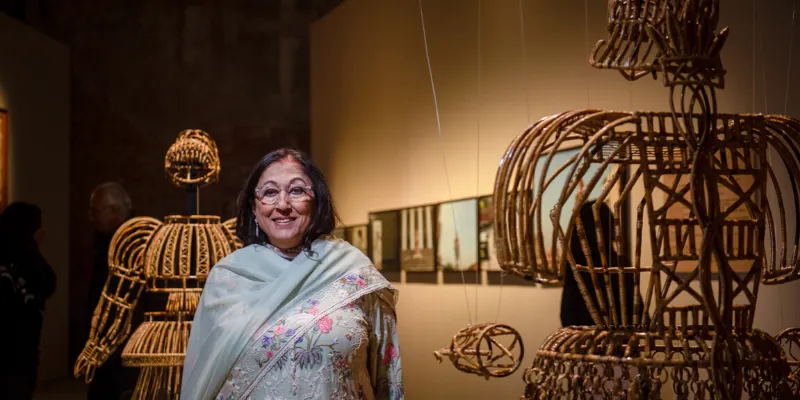
Kiran Nadar at the Venice Biennale.
YSW: What do you think the art scene will be like post lockdown? Will people turn to virtual museums and view galleries online, since we need to maintain social distancing till a vaccine is adequately developed?
KN: Yes, this is likely to happen, a lot of people will turn more and more to virtual mediums. There is actually a positive side to this, online programming can reach many more people and will help to expand knowledge and generate interest amongst audiences. When we part with this crisis and things open up properly, we may see a lot more museum going people.
YSW: Are there any exciting future projects planned for KNMA?
KN: We had many new exciting projects planned such as the new museum and Moscow show, which would have been the largest show of Indian contemporary art outside India. However, due to the current situation, they are all in abeyance till the situation eases.
YSW: You are one of India’s notable bridge players. When you are not running KNMA or playing bridge, what do you enjoy doing the most over the weekend?
KN: What I enjoy most is spending time with my grandchildren!
Edited by Asha Chowdary



